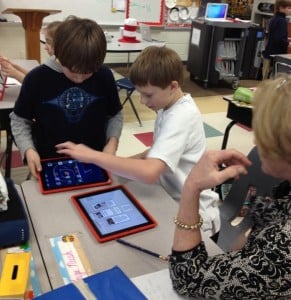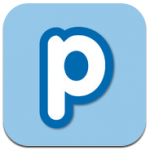Mrs. Mulvaney’s class participated in a STEM activity for Virginia Studies! Check it out below:
Virginia Regions STEM Activity from Tina Coffey on Vimeo.
Mrs. Mulvaney’s class participated in a STEM activity for Virginia Studies! Check it out below:
Virginia Regions STEM Activity from Tina Coffey on Vimeo.
Students at Clearbrook in Mrs. Schlosser’s class participated in a STEM project to learn more about the Regions of Virginia. Students were divided into groups and given boxes and various art supplies (paper, Q-tips, playdough, puff balls, yard, beads, and a few other supplies). Using the materials they had and research materials (textbooks and various websites), their task was to create a Mystery box full of clues about the region of Virginia their group was assigned.
They needed to have at least 14 clues, including clues about products, industries, land forms, water features, animals, renewable and non-renewable resources. At least four of the items had to be 3-dimensional, and one clue could be a written word.
At the very end, students created a QR code to place on their box with the answer to the “Mystery Region.” Other students can now use the clues in the box to guess what region the box represents, and then check their answer by scanning the QR code. They also wrote each day in their journals to describe what they had learned during their work that day.
Not only did students learn about the Regions of Virginia with this project, they used the 21st Century Skills of Collaboration, Communication, Creativity, and Problem Solving.
I can’t take credit for writing this activity. It was written by a group of us during a STEM committee meeting. Here are the handouts if you want a look!
Socks in Mrs. Howell’s class have been singing! Not student’s real socks, thank goodness, but virtual socks on the iPad app Sock Puppets! Take a look:
Sock Puppet Music from Tina Coffey on Vimeo.
Mrs. Sander’s students created poetry Voicethreads with their orginal poems. Check them out!
Students in Mrs. Mulvaney’s and Mrs. Downey’s class have been reading a book about the San Francisco Earthquake. Mrs. Downey created an activity where students used iPads to demonstrate their understanding of the parts of a non-fiction book, as well as a few concepts from the book itself. These students had worked with Pic Collage before when creating bat posters, but this is the first time they worked on a project without any technology support from me. They did a wonderful job and even posted their creations on their blogs! Check out a few examples below! If you would, while you are checking them out, leave a comment! The student’s love to get comments on their work!
Students in Mrs. Mulvaney and Mrs. Downey’s Language Arts Class are at it again! This time they created Cause and Effect Popplets about the book Rosa Parks: Freedom Rider. Many of them blog with different teachers, but you can see their work by clicking on the links below.
 This past week, fourth graders at in Mrs. Mulvaney’s, Mrs. Downey’s, and Mrs. Wallace’s reading class have been learning about Rosa Parks while reading the book, Rosa Parks Freedom Rider by Keith Brandt and Joanne Mattern.
This past week, fourth graders at in Mrs. Mulvaney’s, Mrs. Downey’s, and Mrs. Wallace’s reading class have been learning about Rosa Parks while reading the book, Rosa Parks Freedom Rider by Keith Brandt and Joanne Mattern.



To augment what they were learning in the book, they also practiced research skills to learn more about her. They used Mobicip, Popplet, and Videolicious to create videos about the facts they learned.
The project started with Mobicip. Because Safari is not filtered very much in our school system, we have opted to use Mobicip instead. Mobicip looks a lot like Safari (with tabs and a search box) and allows students to save images in the same way. Students practiced finding relevant websites to find facts about Rosa Parks and saved copyright friendly pictures of her to the iPad Camera roll.
Once students had saved pictures and done their research, they used Popplet to create a concept map. This concept map wouldserve as a storyboard for their Videolicious videos.
Finally, students partnered up. One student opened up the popplet they had created on one iPad and the other student opened up Videolicious on the other ipad. The students choose the pictures they wanted for their video. Then, the second student videoed the first student while he or she used their popplet as a guide.
It was great fun and the students learned a lot…and it was very easy. It was nice to be able to research, brainstorm, and create all on the iPad right in the classroom.
This project also made it easy to see where there were gabs in the knowledge of students, which teachers then could address.
Take a look at a few of their final projects!
Rosa Parks Example 1
Rosa Parks Example 2
 A few weeks ago, a teacher came to me wanting to do a Jamestown Geocaching Activity with her students. I had been doing a lot of work on iPads, and had enjoyed some of the quick, 1 minutes video podcasts by History is Fun.org. I decided to incorporate both the iPads and Geocaching into one activity. Here’s the activity I created:
A few weeks ago, a teacher came to me wanting to do a Jamestown Geocaching Activity with her students. I had been doing a lot of work on iPads, and had enjoyed some of the quick, 1 minutes video podcasts by History is Fun.org. I decided to incorporate both the iPads and Geocaching into one activity. Here’s the activity I created:
1. Download Podcasts videos to at least 6 iPod Touches/iPads from iTunes. You can find them here: Historyisfun.org Podcasts. You’ll need the following videos:
2. Hide 6 Caches with the following labels on each cache: Jamestown Cache Labels. Mark the locations of the caches with the GPS Units.
3. Students were broken up into groups, and given a clipboard, a Jamestown Geocaching Answer Sheet, an Order Strip for 6 Caches, and an iPad with the videos (but iPod Touch would work too), a pencil, and a GPS Unit.
4. Students worked in groups to find and answer the questions using the videos. I suggest the following jobs for members the group:
5. When students were finished, they used the app, Scan, and the following Jamestown Geocaching QR Codes to check their work. A traditional Answer Key is located here if you do not have time for this part of the activity. Students re-watch the videos for the questions they’ve missed.
So far I’ve had two classes complete this activity, and they loved it! I liked using the iPads because they were big enough for the entire group to see. I found it really important to discuss reading the questions BEFORE watching the videos…and practicing with the Slavery video was very helpful.
____________________
Image: Kolk, Melinda. compassrose.jpg. 1-Apr. Pics4Learning. 9 Nov 2012 <http://pics.tech4learning.com>
I was horrible at history when I was in school, especially if it involved memorizing dates and names. I am a “big picture” learner…I stink at details. I learned information better if I could put dates and people into stories. I remember that my mom used to teach me mnemonics and other techniques to remember facts I had to memorize. I think that’s what’s made me enjoy working with Virginia Studies classes on projects this year: I’ve watched the teachers make history memorable and understandable for students with these projects. If I’d had teachers that allowed us to do projects like these, maybe I’d have had a much easier time learning history back then!
 The first project was a podcast about the 4 regions of Virginia. Mrs. Ingram at East lead a group of students as they wrote 5 different segments–one for each region. It turned out great, and they even had a catchy way to remember the regions.
The first project was a podcast about the 4 regions of Virginia. Mrs. Ingram at East lead a group of students as they wrote 5 different segments–one for each region. It turned out great, and they even had a catchy way to remember the regions.
Press on the button below to listen:
The next Virginia Studies project involved using Timeliner, a program for creating a visual timeline of certain events. Mrs. Barnett and I worked with two of the 4th grade classes at East to help them create broad timelines that included the most important events in Virginia History. Mrs. Barnett wanted students to see the time span between events that happened, especially the large span of time between the American Revolution and the Civil War. This was a way of placing details into a big picture context. Take a look at some of the ways they displayed this information:
 The most recent project was a podcast created under the direction of Mrs. Crotts at GWC. The students met with her and wrote their own scripts for this podcast. I was unable to be at the school to help them record, so a couple of students learned to use an MP3 player to record their classmates all by themselves. All that was left for me to do was add music and put it all together. I’m always amazed at the creative ability of students when given independence…the result was incredible. Take a listen:
The most recent project was a podcast created under the direction of Mrs. Crotts at GWC. The students met with her and wrote their own scripts for this podcast. I was unable to be at the school to help them record, so a couple of students learned to use an MP3 player to record their classmates all by themselves. All that was left for me to do was add music and put it all together. I’m always amazed at the creative ability of students when given independence…the result was incredible. Take a listen:
Ready, Aim, Fire! SOLs! — American Revolution
In the end, the students even wrote thank you notes to both Mrs. Crotts and I for helping them with the podcast, which totally made my day!!!
All three of these projects were wonderful ways to engage student creativity and to help them see the broad picture and stories behind history facts…while using technology!! Thanks, Mrs. Barnett, Mrs. Ingram, and Mrs. Crotts for allowing me to work with you and your students this year. I’ve had a blast! I hope your students did too!
Just wanted to pass along a website that was mentioned for SOL practice in the 5th grade meeting yesterday. It came from Mary Hollar at West Salem Elementary. It’s called www.thatquiz.org, and it has online review problems for Math…including a way to practice with a protractor and a ruler (be careful, though, since the cm ruler on this site starts at the end of the ruler).
There is also an entire page of links that Pam and I have put together to allow you to practice for SOL tests using computers, including released practice tests from prior years (they don’t look exactly like the test, but they are still good practice). Take a look when you have a chance. To find it, go to Your school’s homepage>Students>Links for Kids>Your Grade Level>Online Testing Practice or click here.
If you know of anything else that should be added to this page, please, please let me know. The more ideas and resources we have, the better!! :)